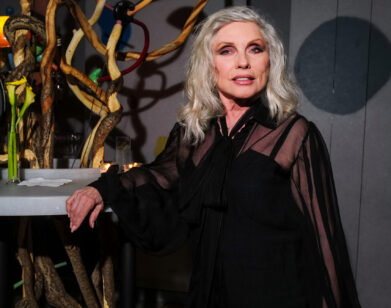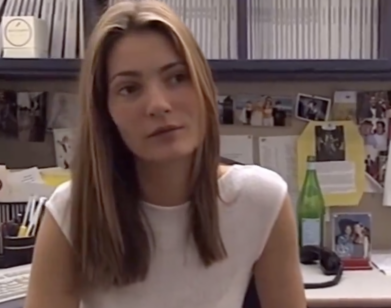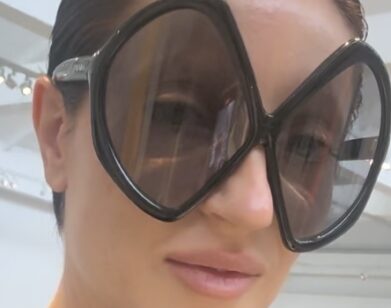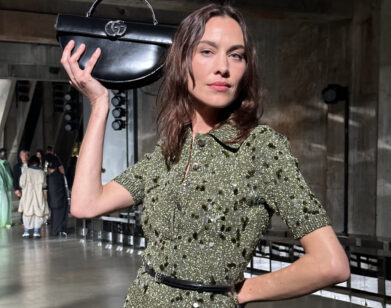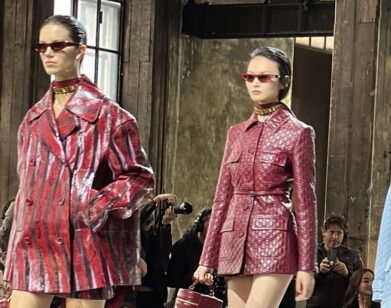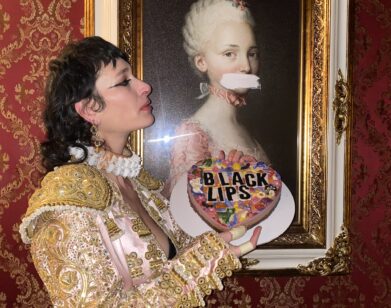Stranger Than Kindness: Inside Nick Cave’s Creative World
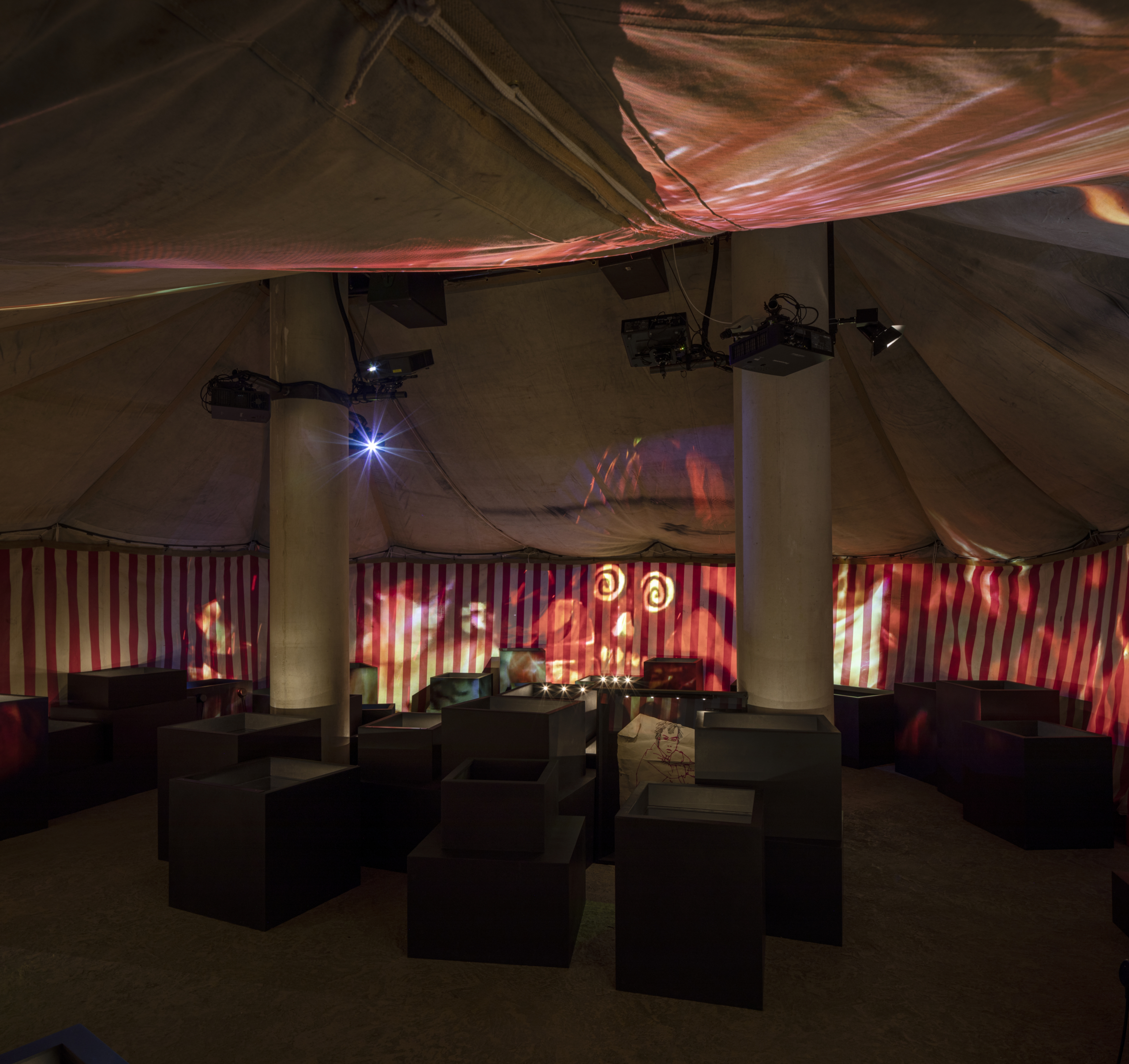
Do you ever wonder how Nick Cave became Nick Cave? The Bad Seed’s frontman, inimitable performer, writer, and musician collaborated with The Black Diamond on the Royal Academy of Arts in Copenhagen to create the new exhibition Stranger Than Kindness. Produced by Gucci and co-curated by Cave himself, the show gives us a unique autobiographical glance into the oeuvre and creative process of a true artist.
The show takes us through a journey of Cave’s mind with personal relics and recreations of his past. In one room, projections of a circus tent are pitched to set the stage of the 1989 music video for “Nick the Stripper,” where curator Christina Back explains the video set was a party to recreate their version of hell. Other corners of the exhibition show old bedrooms and office spaces. One installation is a recreation of Cave’s old bedroom in West Berlin, where he lived in a crawl space covered with artifacts ranging from personal notebooks, religious iconography he collected from local fleas, and locks of hair. Another corner focuses on Cave the novelist, his desk sets the scene of where he wrote his second novel, The Death of Bunny Munro, displaying the manuscript and photographs of the author writing the piece in Tuscany. We spoke with co-curator and designer, Christina Back, on the sentimentality of the shows works and their significance to the formation of Nick Cave.
———
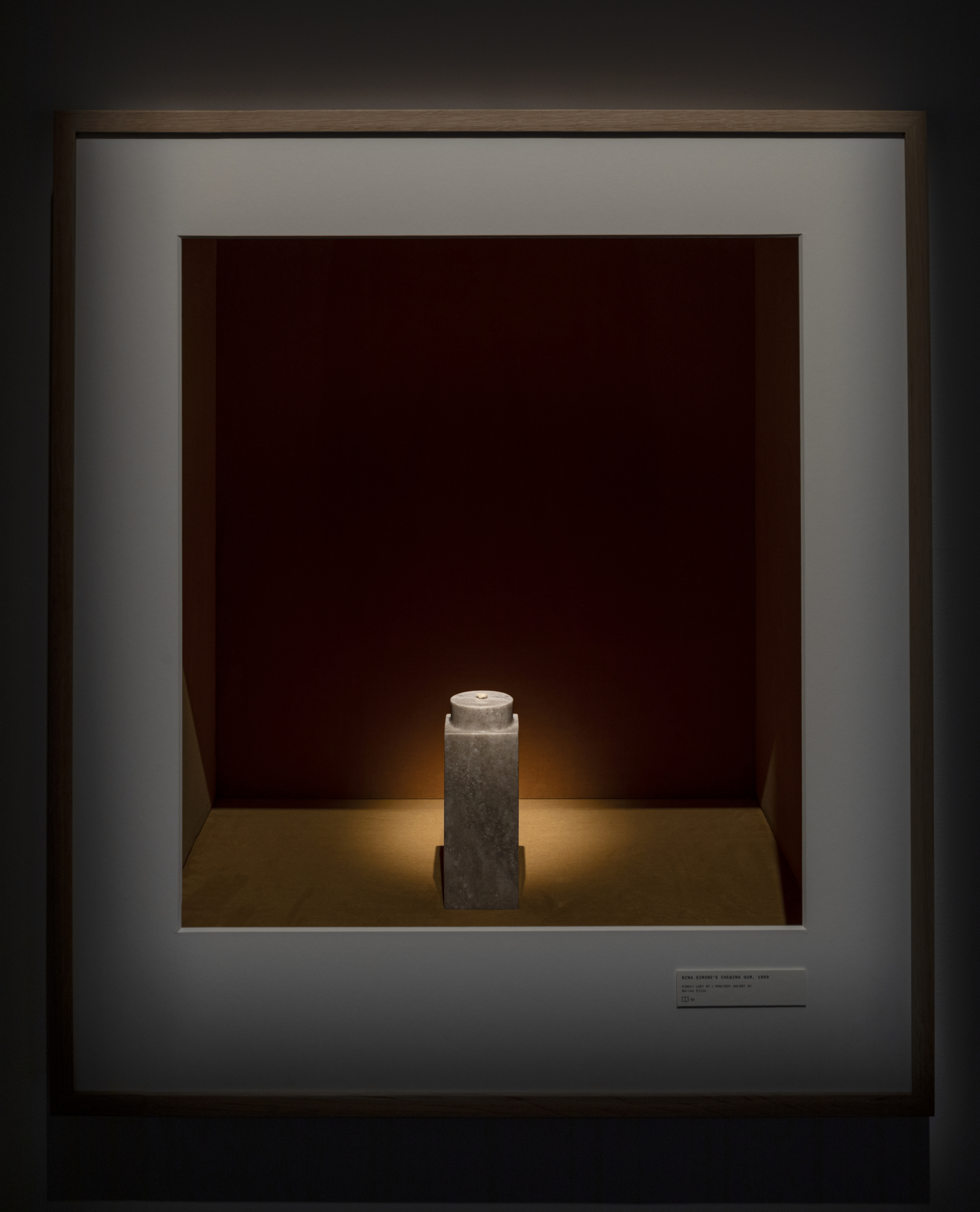
Nina Simone’s chewing gum, 1999. Photo: Anders Sune Berg / Royal Danish Library.
“Nina Simone’s chewing gum was kindly lent to the exhibition by Warren Ellis. To me this is among one of the most wonderful items in the exhibition. It’s unique, powerful and fragile at the same time. It is this small thing that holds a great story, and in that way it reflects the idea of the exhibition: How things can carry a story and a meaning much larger than the thing itself. The chewing gum was immortalized in Iain Forsyth & Jane Pollard’s award-winning film about Nick Cave 20,000 Days on Earth.”
———

Installation set in the period when Nick Cave fronted The Boys Next Door and The Birthday Party (1978-1983). Photo: Anders Sune Berg / Royal Danish Library
“The installation in this space is based on the ‘Nick the Stripper’ music video directed Paul Goldman and John Hillcoat in 1989. The music video was shot in Melbourne in the middle of the night in an old circus tent. The Birthday Party invited their friends and associates to come and party and recreate their version of hell. The reconstruction of the tent in the exhibition presents a large amount of items from the period, including Nick Cave’s hand drawn cover proposal for the ‘Nick the Stripper’ single, the original song lyrics for ‘Mutiny in Heaven’ and a selection of items lent to the exhibition from each band member of The Birthday Party. Altogether the space is a glimpse into the beautiful chaos and the inspiring relationships in the early years of Cave’s creative journey.”
———
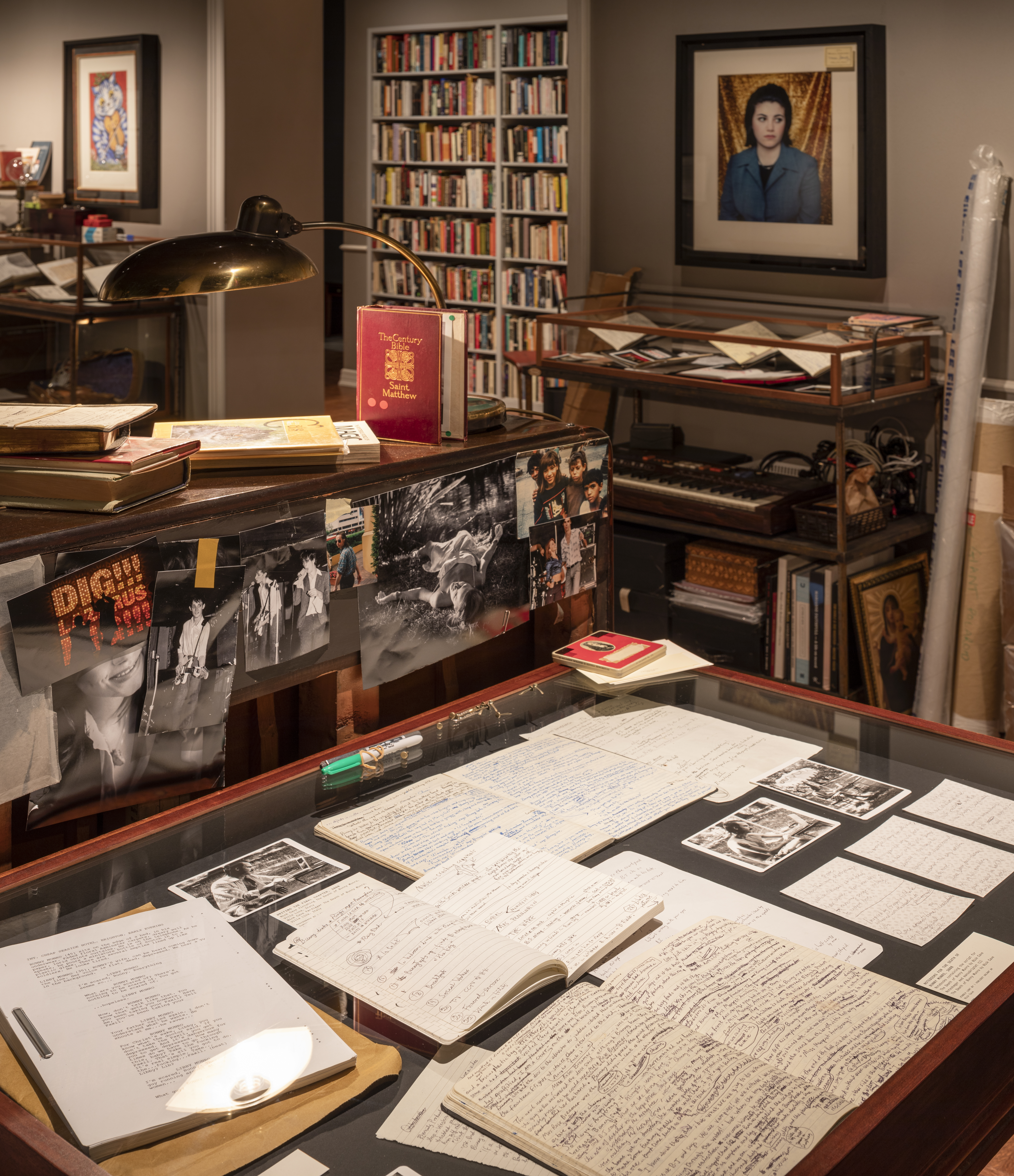
Reconstruction of Nick Cave’s office, created in collaboration with artists Iain Forsyth & Jane Pollard. Established with inventory, artifacts and photographs from Nick Cave’s private office, including Nick Cave’s entire library. Photo: Anders Sune Berg / Royal Danish Library.
“This area in the large office installation features notes and original manuscript for Nick Cave’s second novel The Death of Bunny Munro, released in 2008. The presentation includes the notebooks in which Nick Cave wrote the first draft for the novel, the presentation and a number of photographs by Dominique Issermann showing Nick Cave in the garden of Villa Lina in Italy writing the final chapter for the book. Sitting under the parasol in his shorts with the kids running around, these images offers a view into how work and family life sometimes merge together in the creative life of Nick Cave.”
———
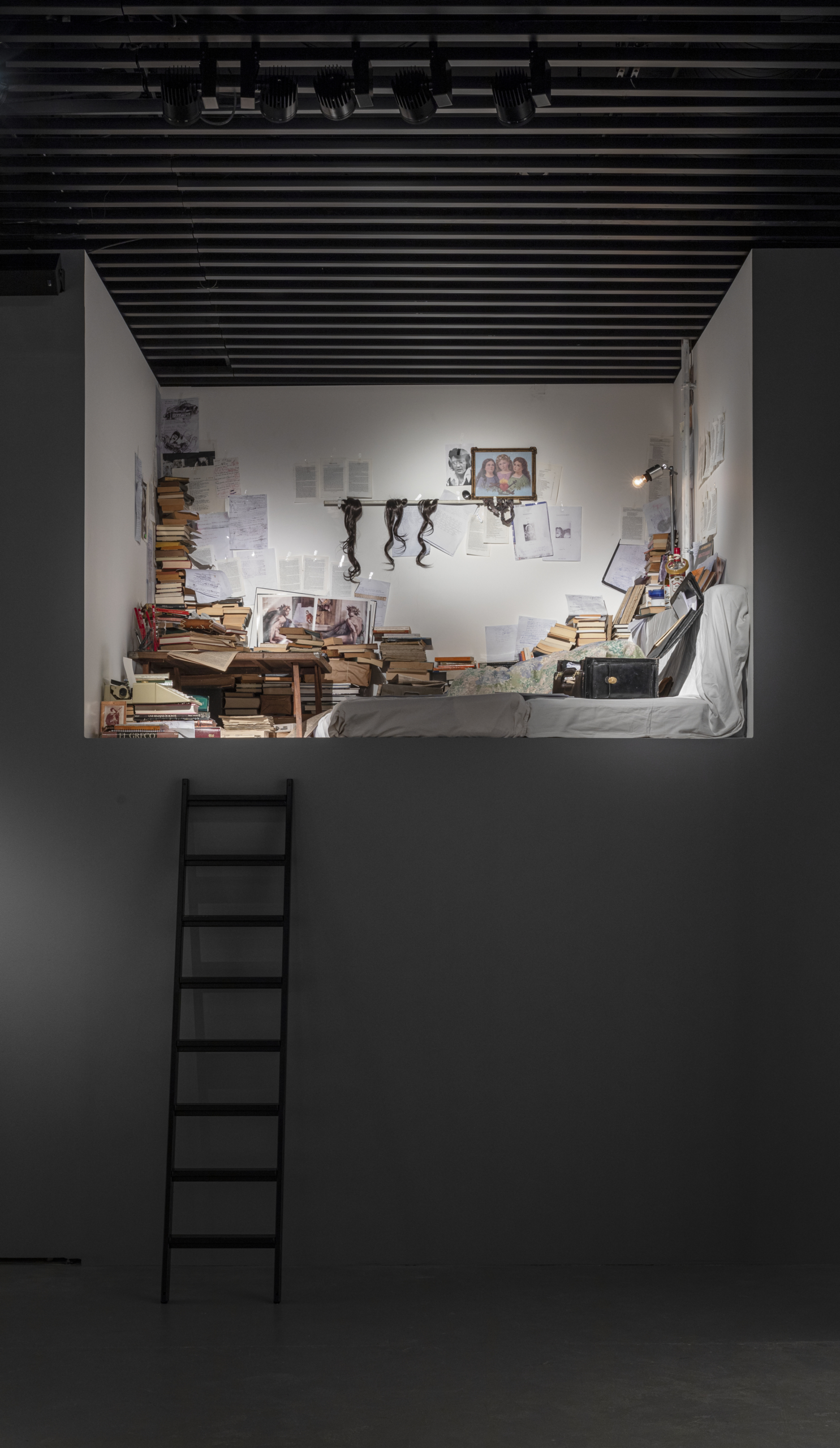
Euchrid’s Crib: Recreation of Nick Cave’s room in Yorkstraße, West Berlin, 1985. Photo: Anders Sune Berg / Royal Danish Library.
“This space is a recreation of Nick Cave’s room in Yorkstraße in West Berlin in 1985. The installation is created in collaboration with Nick Cave and is based on a photograph by Bleddyn Butcher called ‘Euchrid’s Crib.’ From 1982 to 1989 Nick Cave lived in a series of small rooms around Berlin. This room was a former maid’s chamber and the celling was so low that you had to crawl into the room. Nick Cave filled the space with all kind of miscellaneous items from Berlin flea markets: Religious iconography, three locks of hair, possibly from sisters, found inside an old box of chocolates; pages from the Bible; a picture of Elvis and one depicting faith, hope and charity. Maybe for inspiration, maybe as an expression of Cave over-identifying himself with Euchrid, the main character of his first novel And the Ass Saw the Angel (1985), who was also a large collector.”
———
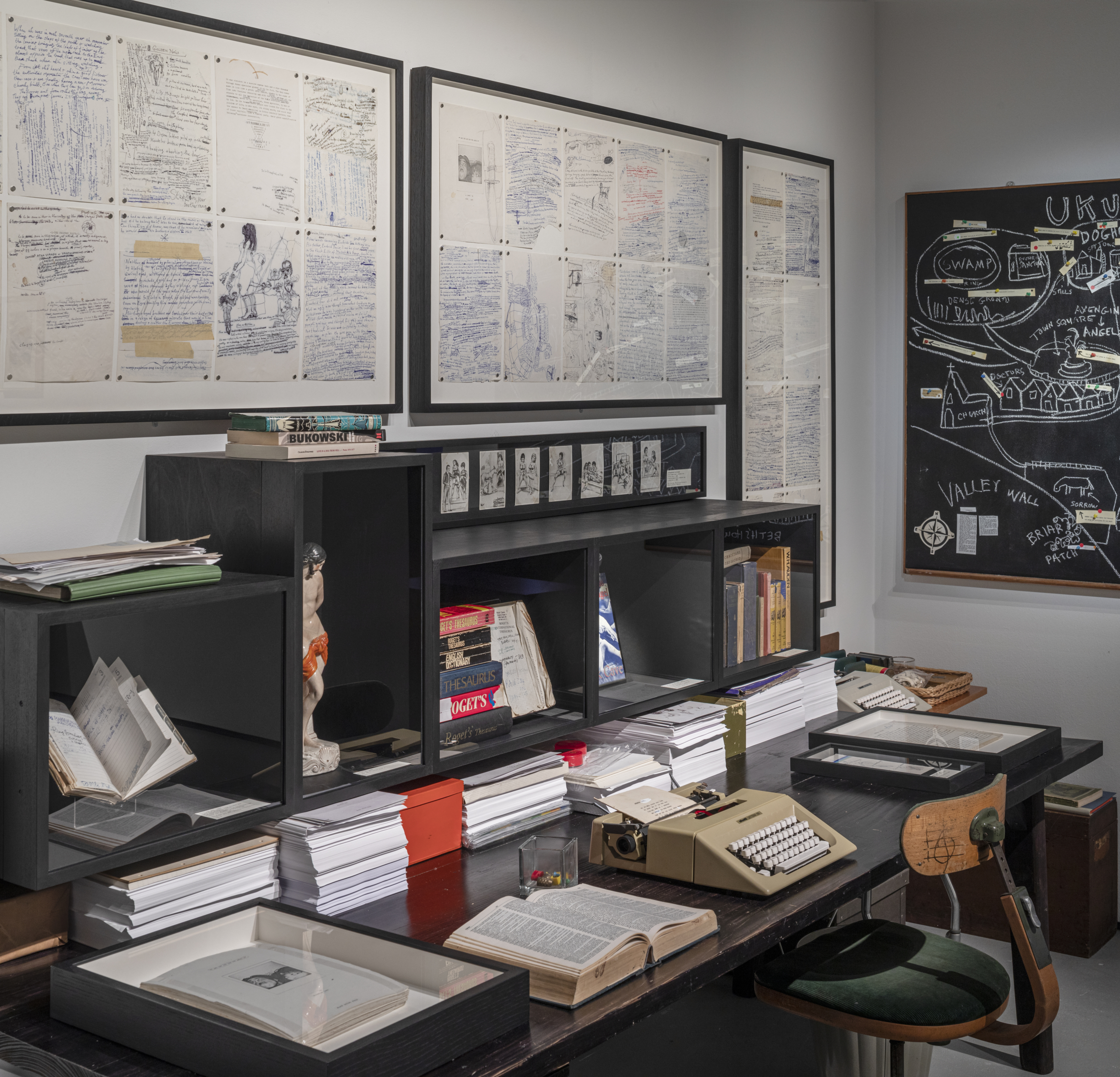
Exhibition space dedicated to Nick Cave’s first novel And the Ass Saw the Angel (1985). Photo: Anders Sune Berg / Royal Danish Library.
“This is a part of the exhibition that is dedicated to Nick Cave’s first novel And the Ass Saw the Angel, which was published in 1985. The installation features notes, original pages from the manuscript and a map of the town Ukulore, hand drawn on a chalk board by Cave in 2020. To begin with Nick Cave considered his work with the novel an extracurricular activity, but it ended up kind of an obsession to him, and he would work on the book for days without sleeping. At the time Nick Cave often lived with friends and did not have his own typewriter, so the manuscript was either written by hand or on borrowed typewriters. Nick Cave would carry the manuscript around with him in a plastic shopping bag with the result that he lost it twice—once in Berlin and once in London. As it was the only copy, each time Cave had to start writing it again from scratch.”
———
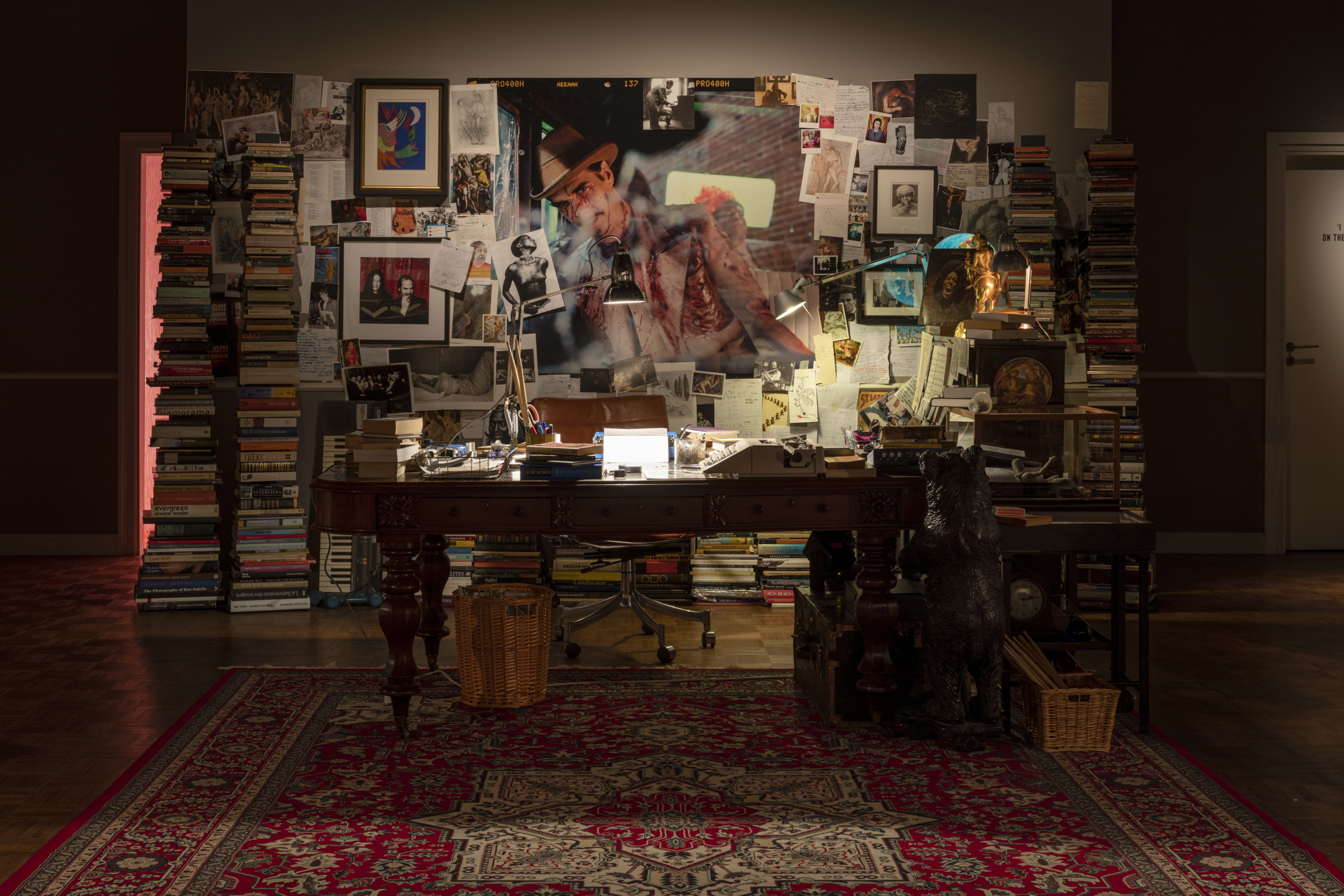
Reconstruction of Nick Cave’s office, created in collaboration with artists Iain Forsyth & Jane Pollard. Established with inventory, artifacts and photographs from Nick Cave’s private office, including Nick Cave’s entire library. Photo: Anders Sune Berg / Royal Danish Library.
“Nick Cave always had an office of some kind. Nick Cave’s move to Hove, East Sussex with his wife Susie, and twins Arthur and Earl in the early 2000s enabled him to establish an actual office with an extensive library, which he could retreat to with discipline and time to focus on his job as a writer and musician. The recreation of the office and the desk with the piano next to it offers a glimpse into Cave’s actual work environment and is in itself an interpretation of a place of work seen through the eyes of a musician and storyteller.”
———
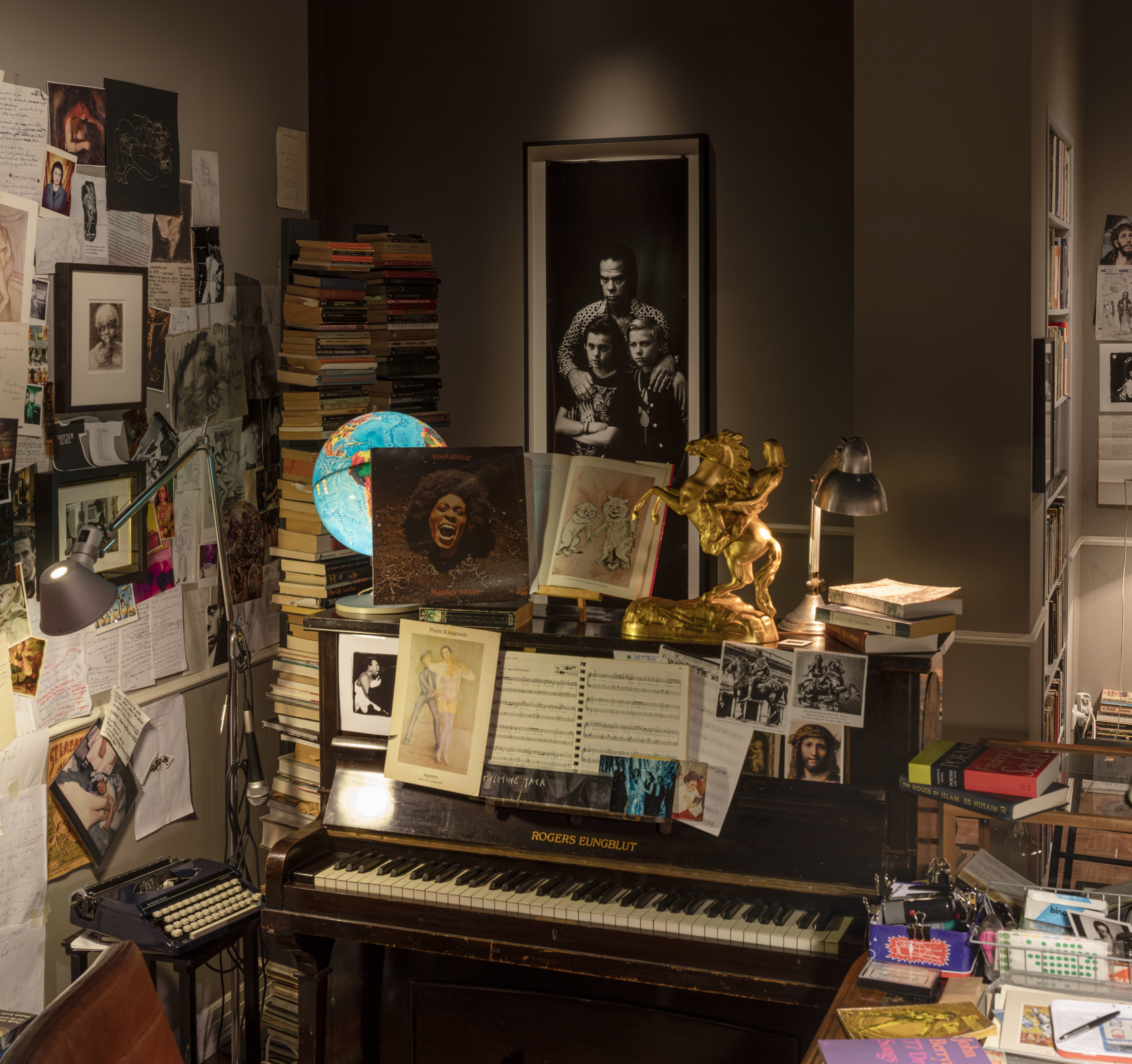
Reconstruction of Nick Cave’s office, created in collaboration with artists Iain Forsyth & Jane Pollard. Established with inventory, artifacts and photographs from Nick Cave’s private office,nincluding Nick Cave’s entire library. Photo: Anders Sune Berg / Royal Danish Library.
“The office installation also includes two of Nick Cave’s pianos. One of these standing next to the desk offers Cave the possibility of an easy flow between writing and playing. In the background you can see a life-size polaroid taken in Berlin around 2010 depicting Nick Cave and his twin sons, Arthur and Earl.”
———
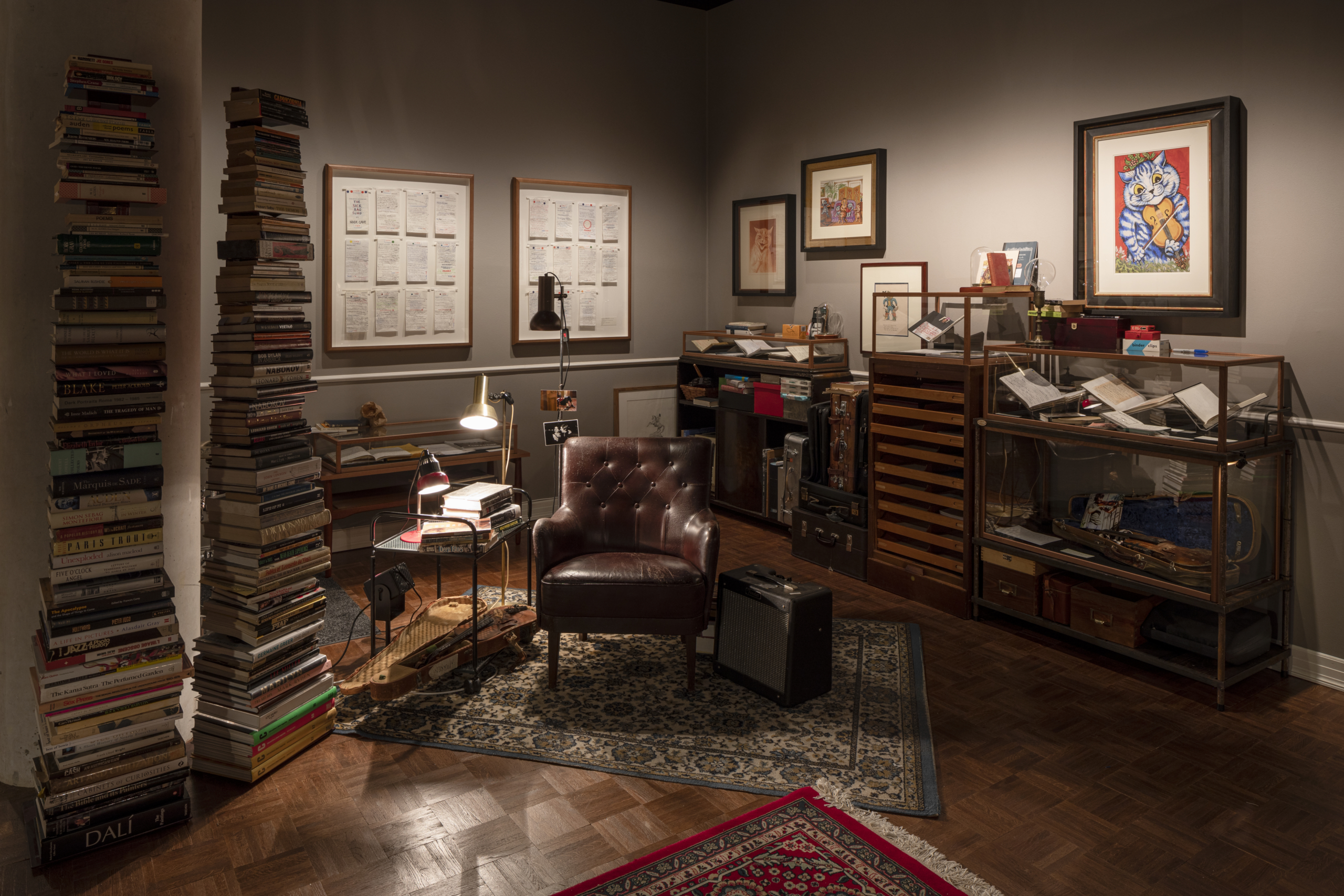
Reconstruction of Nick Cave’s office, created in collaboration with artists Iain Forsyth & Jane Pollard. Established with inventory, artefacts and photographs from Nick Cave’s private office, including Nick Cave’s entire library. Photo: Anders Sune Berg / Royal Danish Library.
“This part of the office installation presents a large collection of Nick Cave’s notebooks from the early 90s up to the current time. Nick Cave writes all his songs in notebooks, and the pages reveals the autonomy of his song writing and how the lyrics comes together, are negated and migrated. Nick Cave calls these notebooks objects of devotion and he always carries a notebook with him. When the song is finished, Cave types out the lyrics and glues them into the notebook. The books are then taken into the studio and the lyrics are reworked again as Cave improvises with the band.”
Stranger than Kindness is on view for all to experience at The Black Diamond at the Royal Academy of Arts in Copenhagen now through February 2021.

